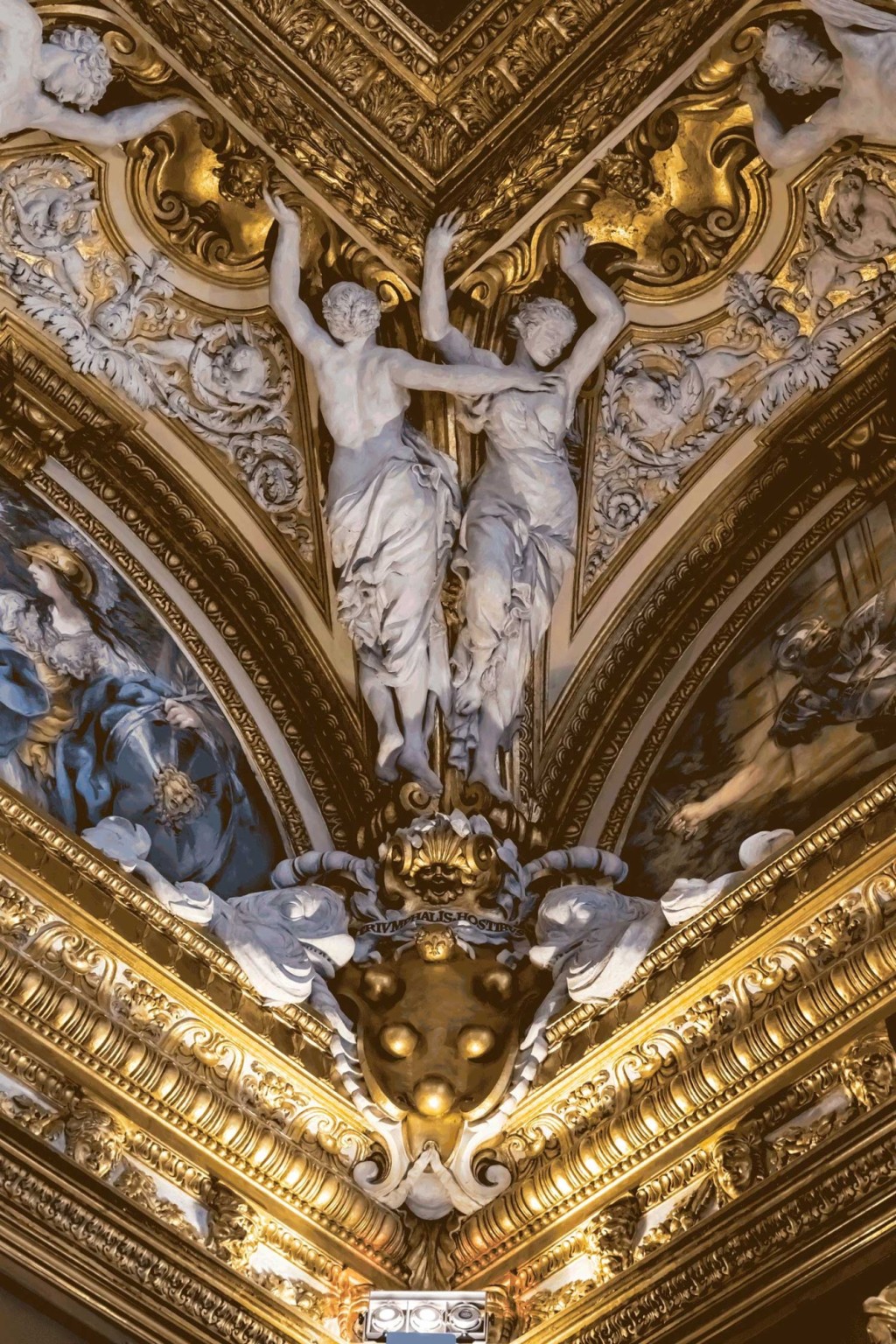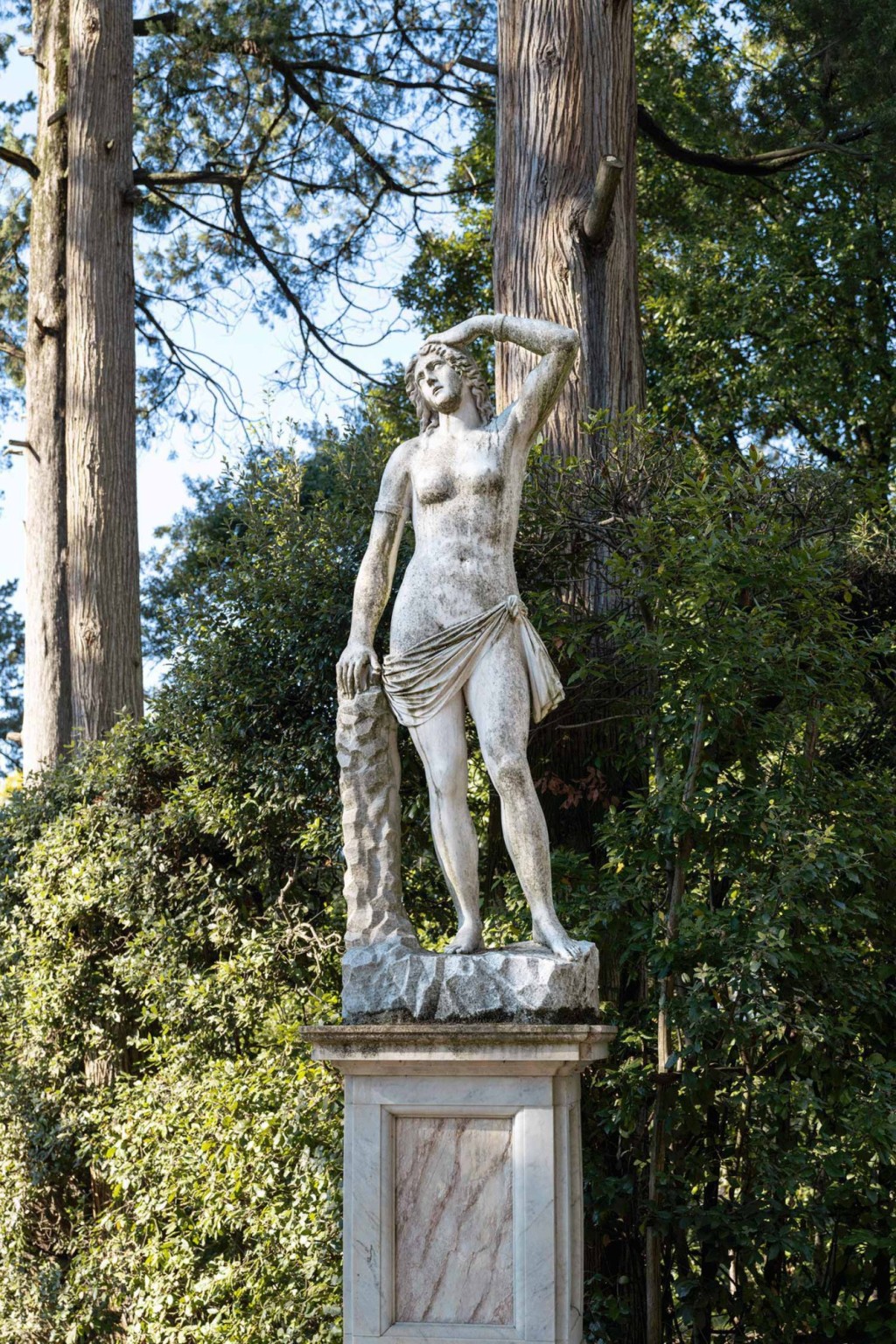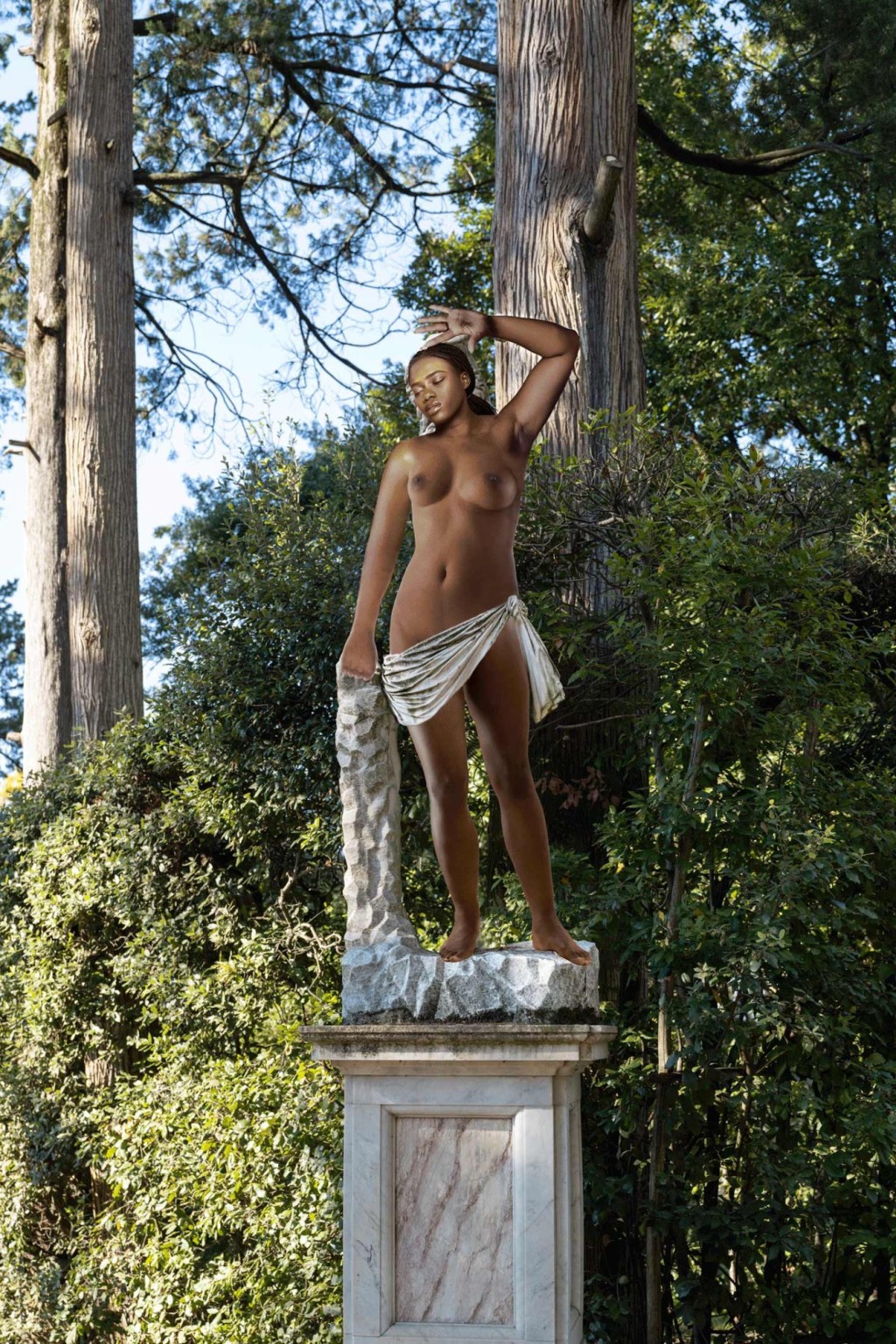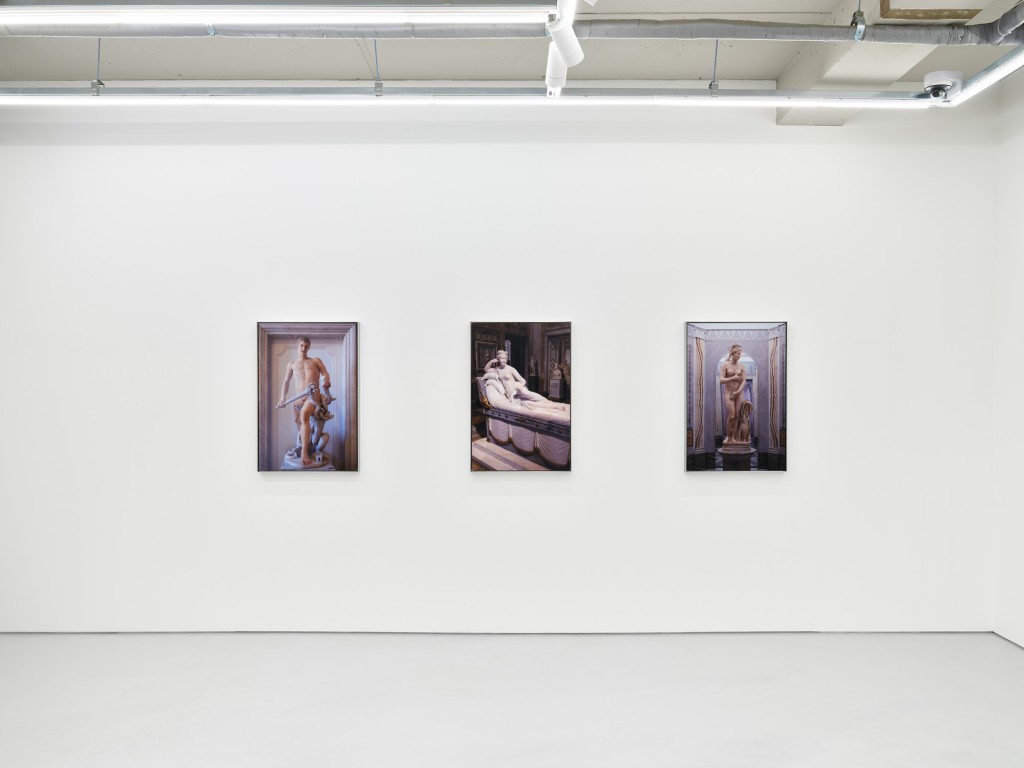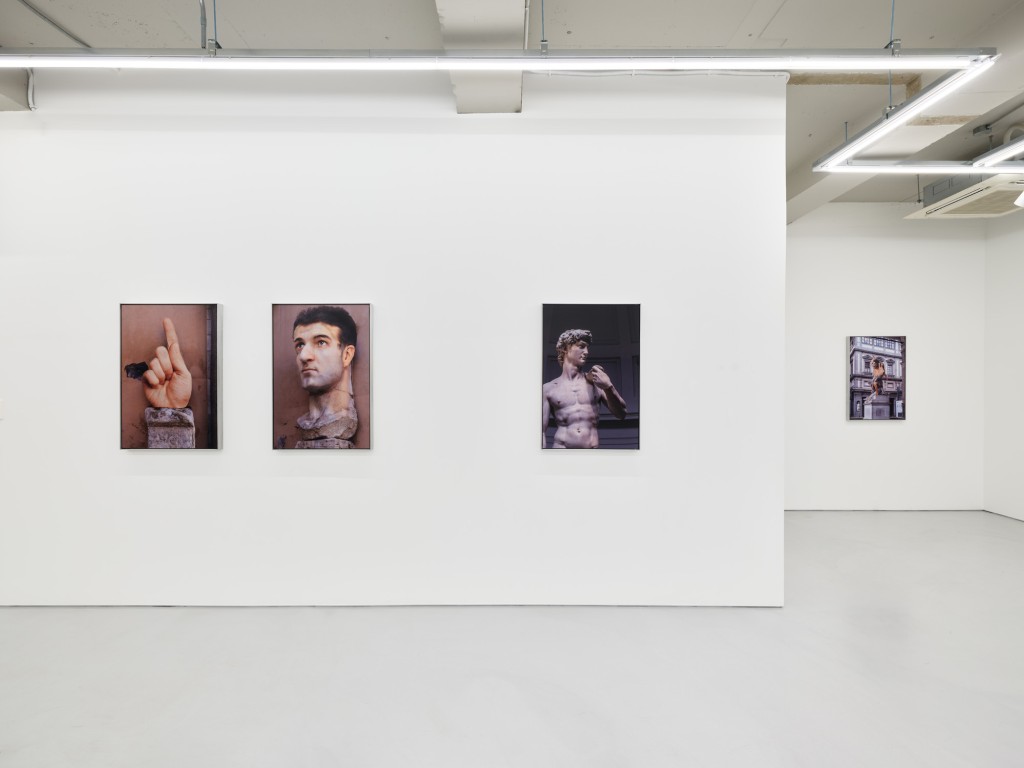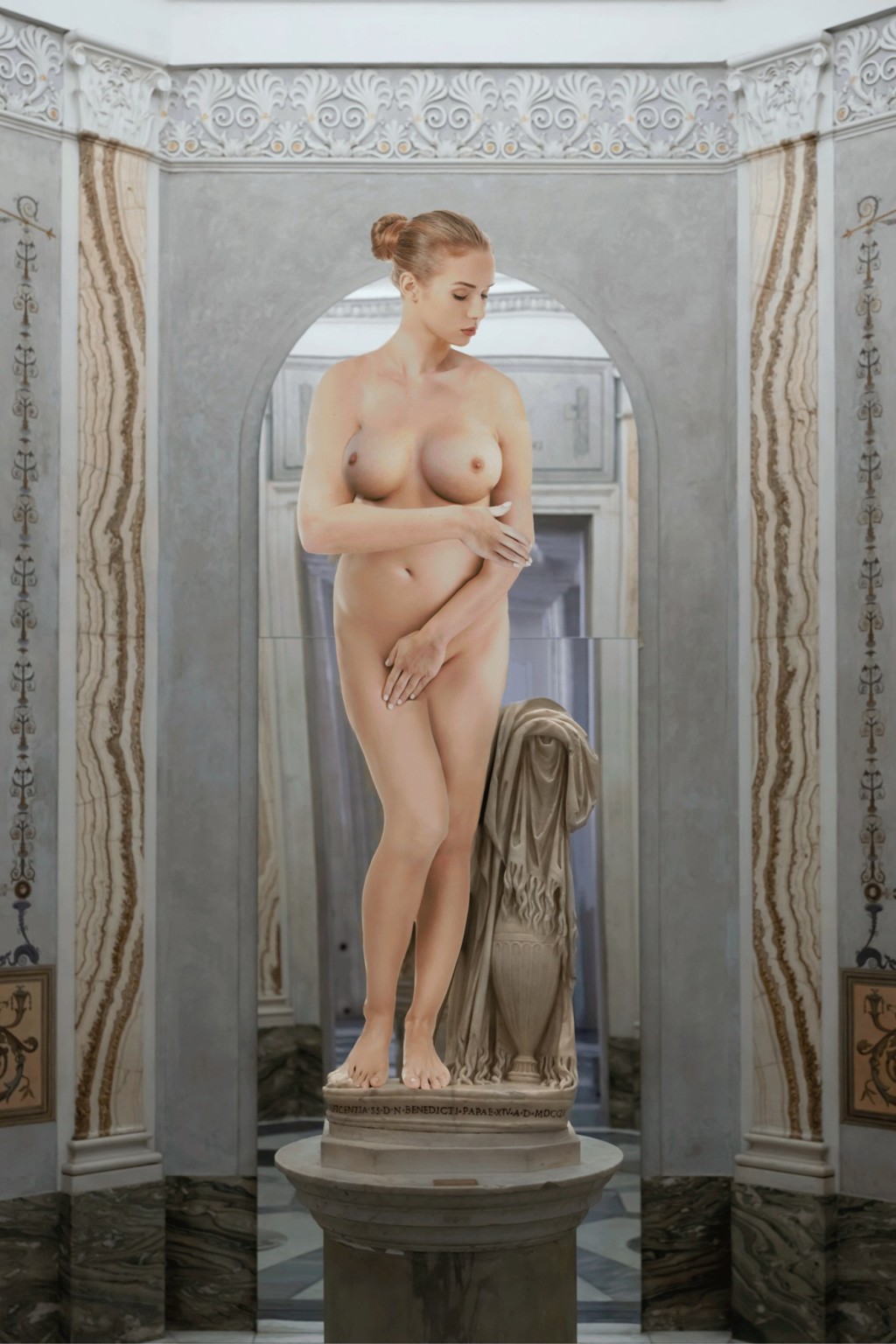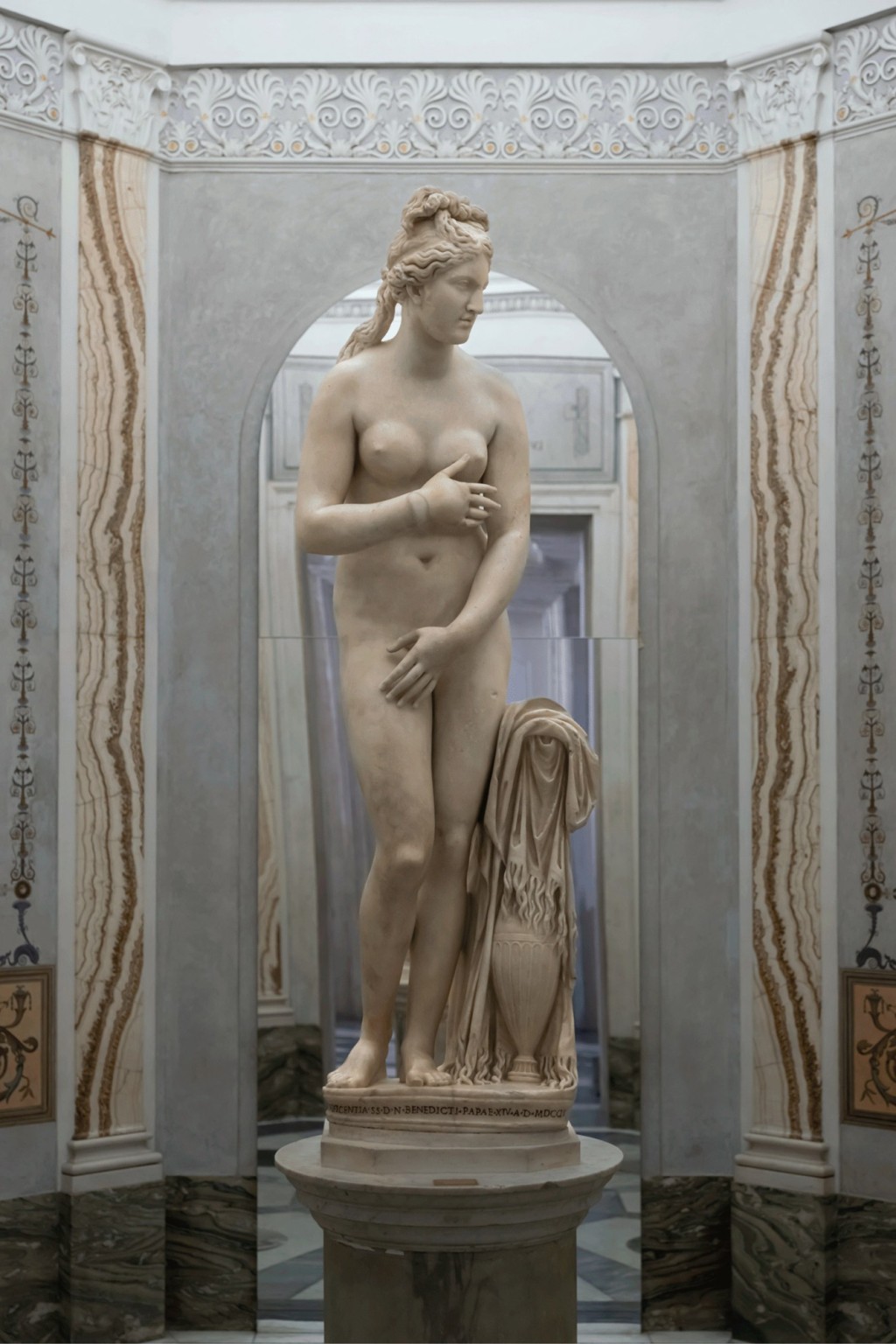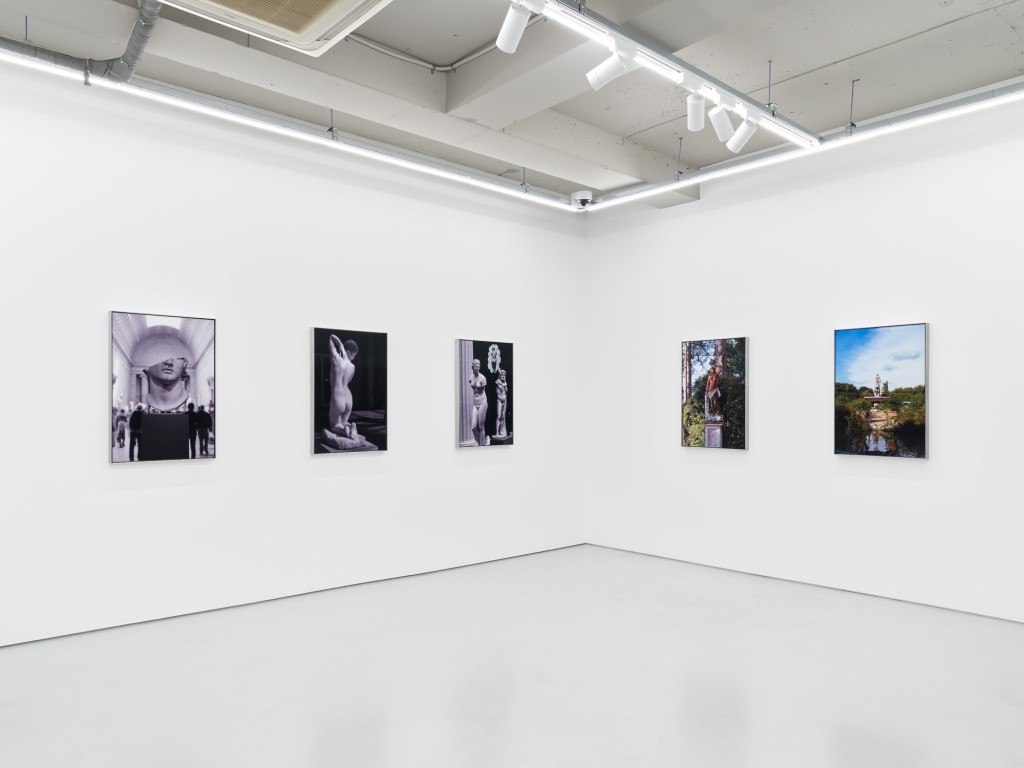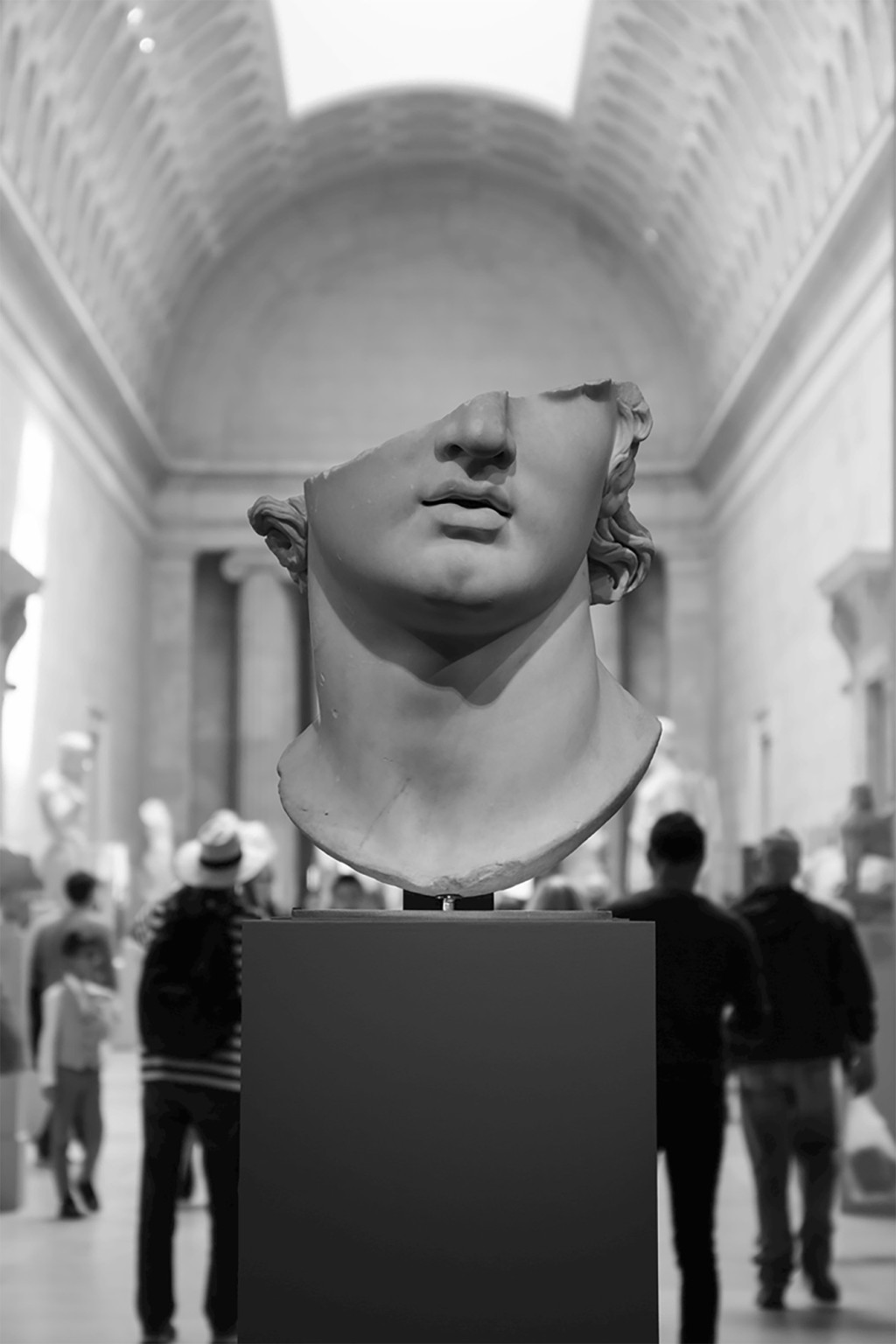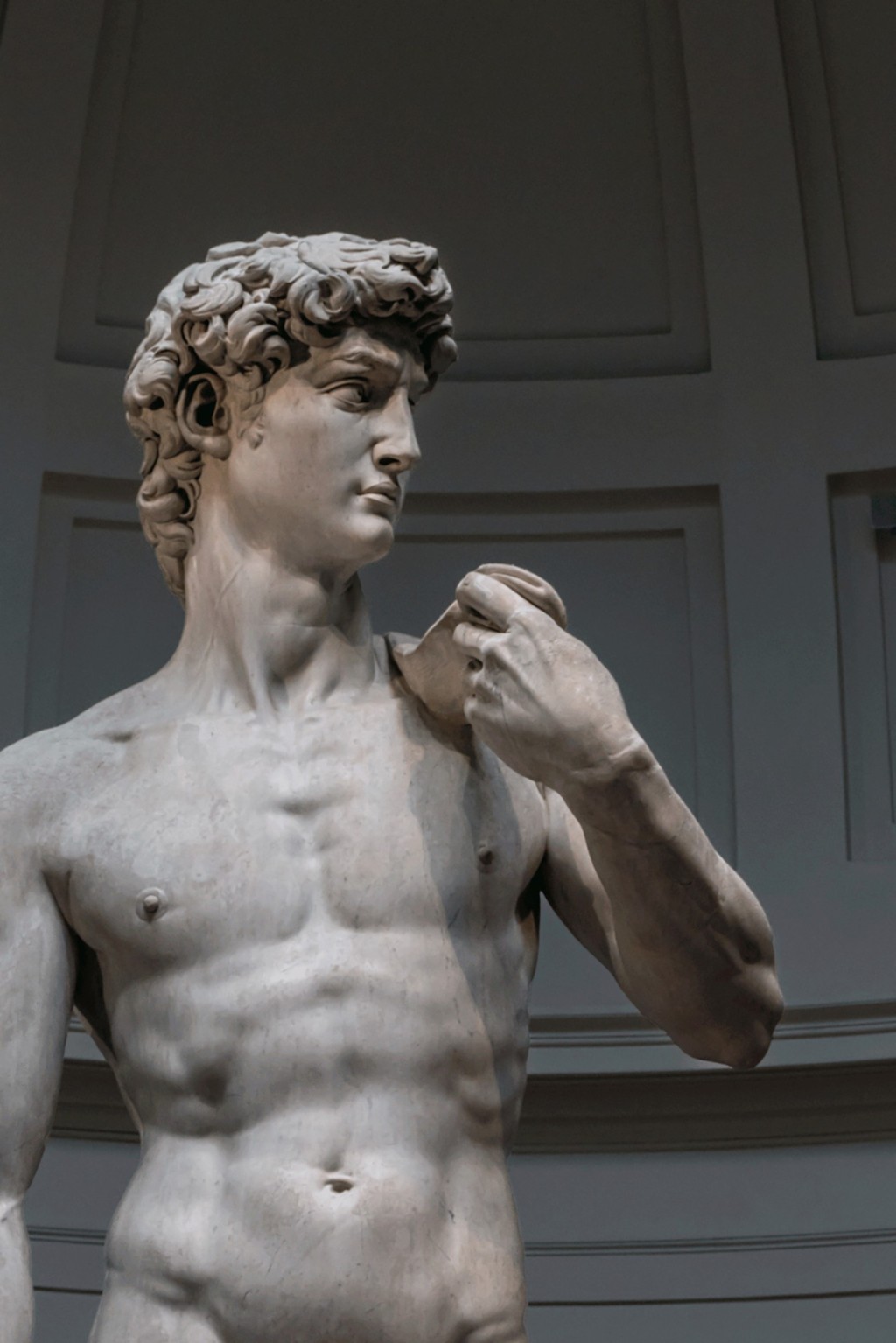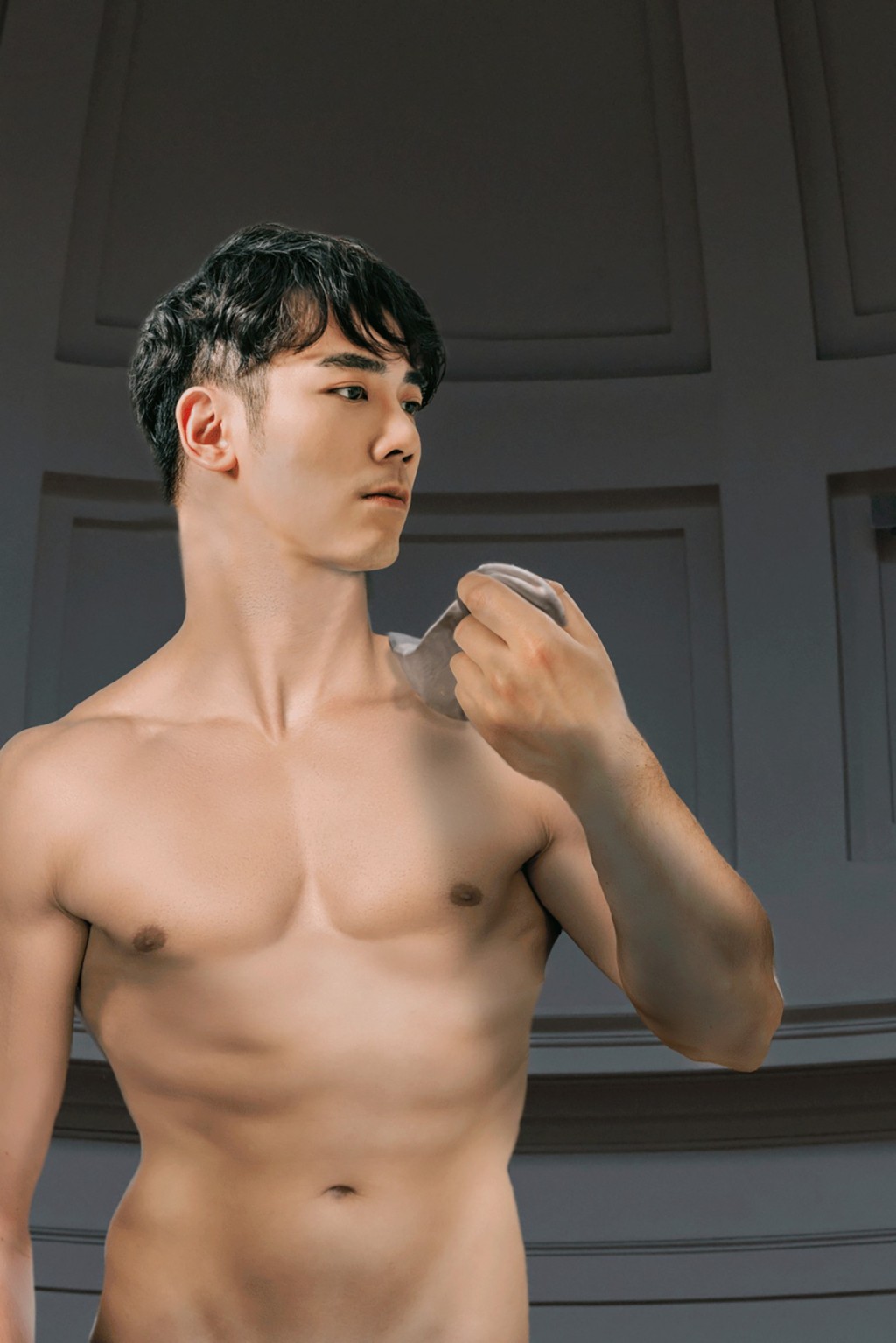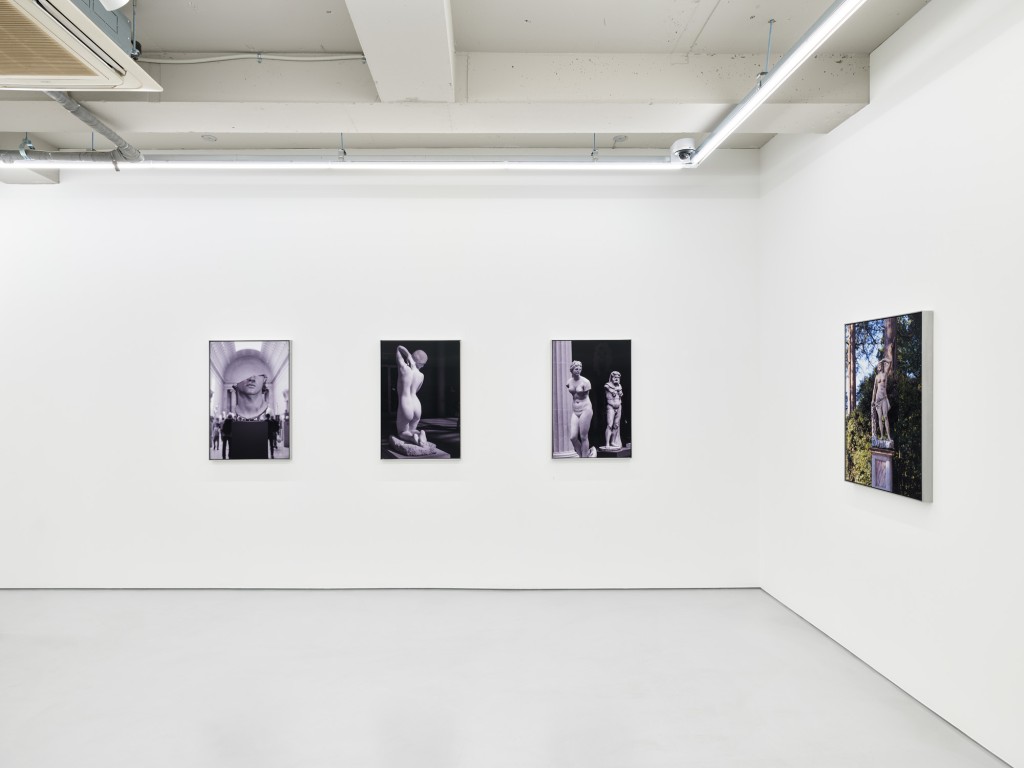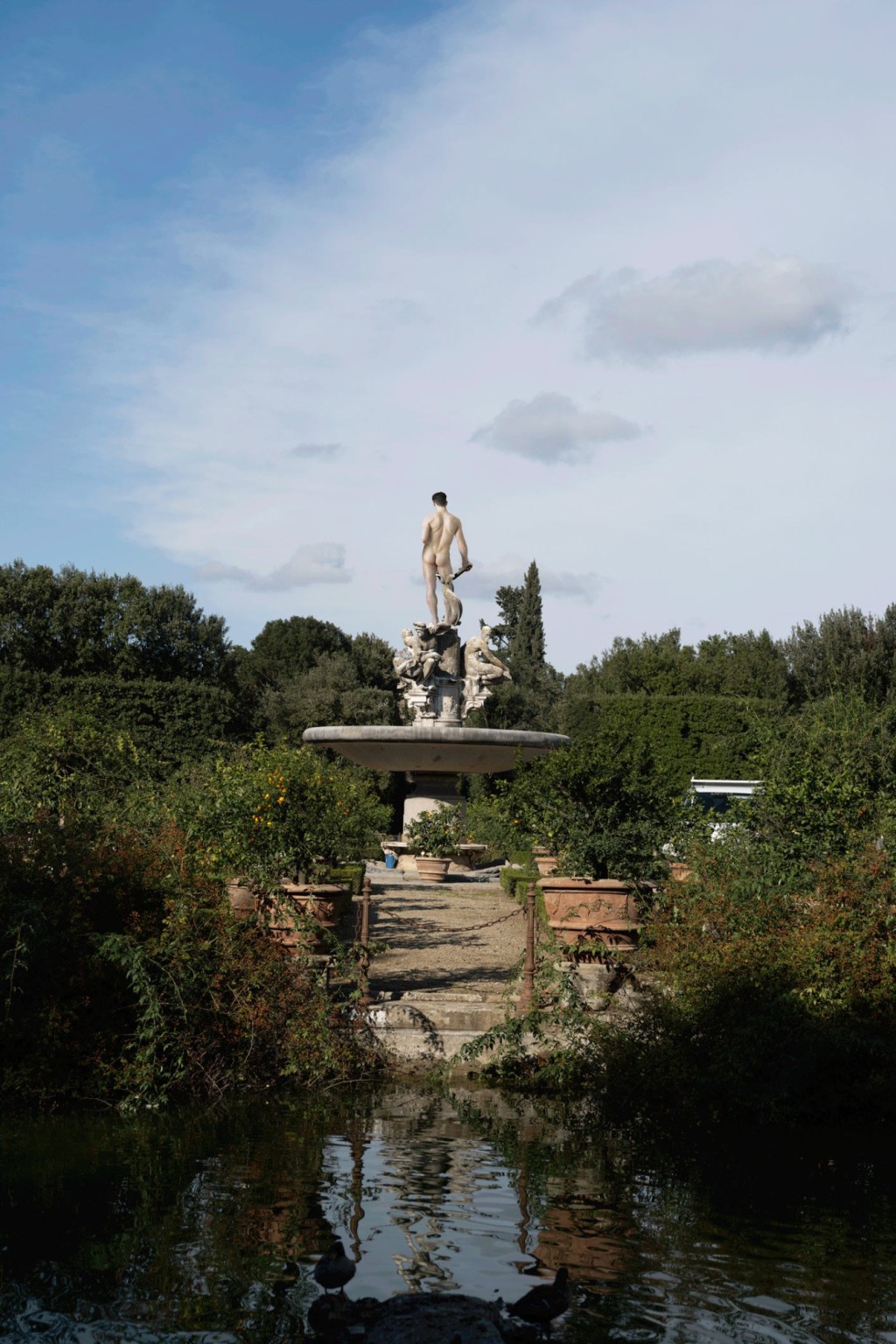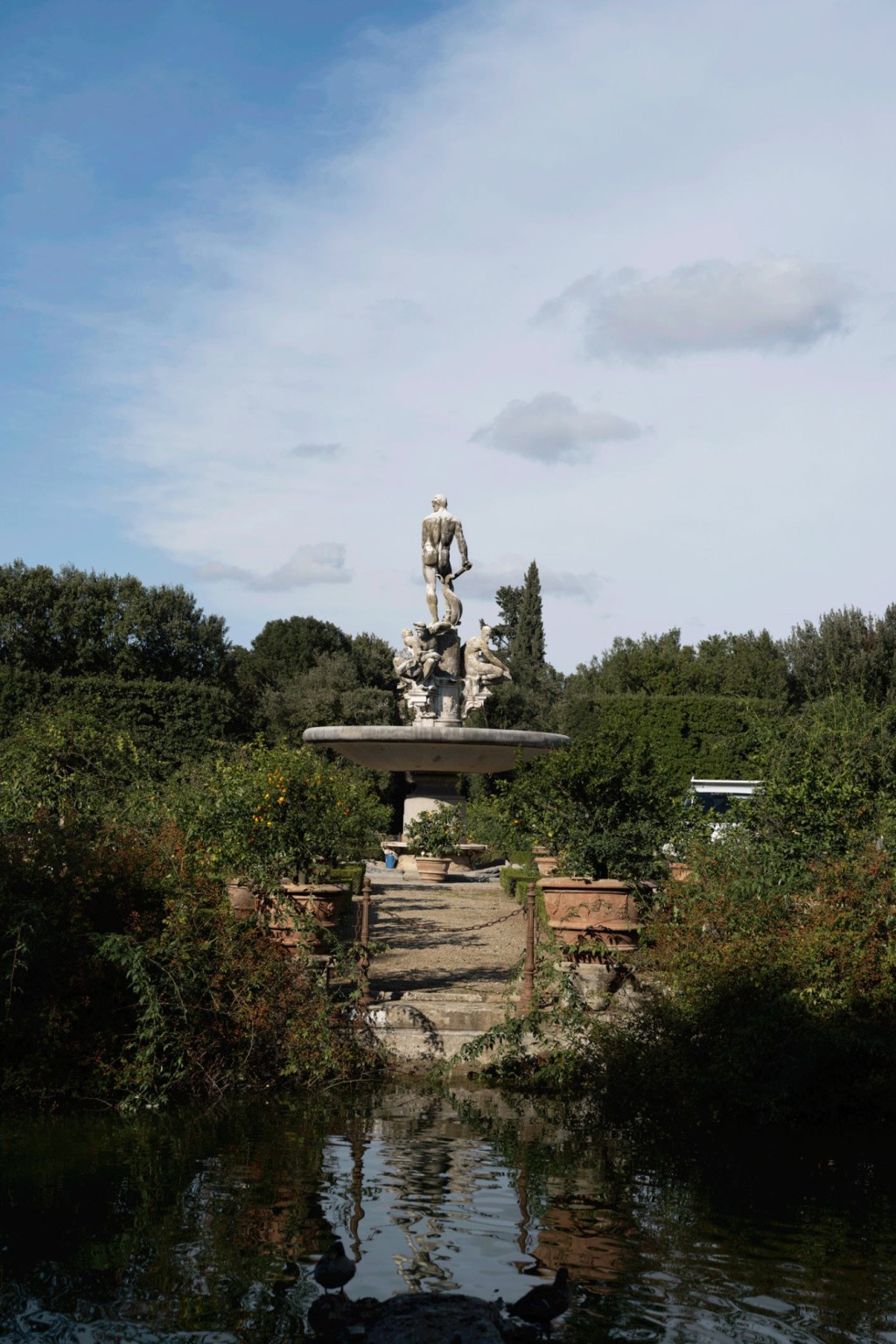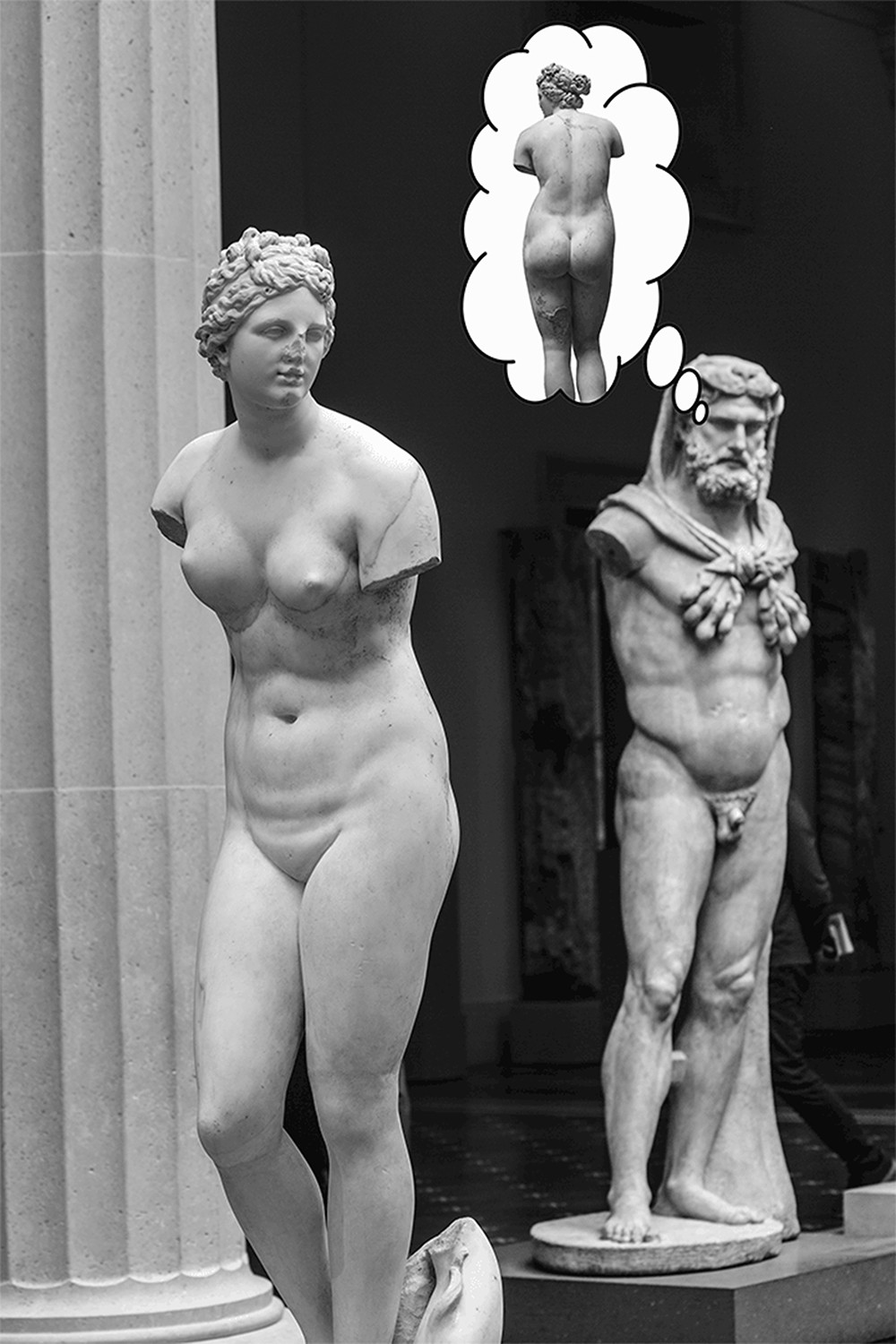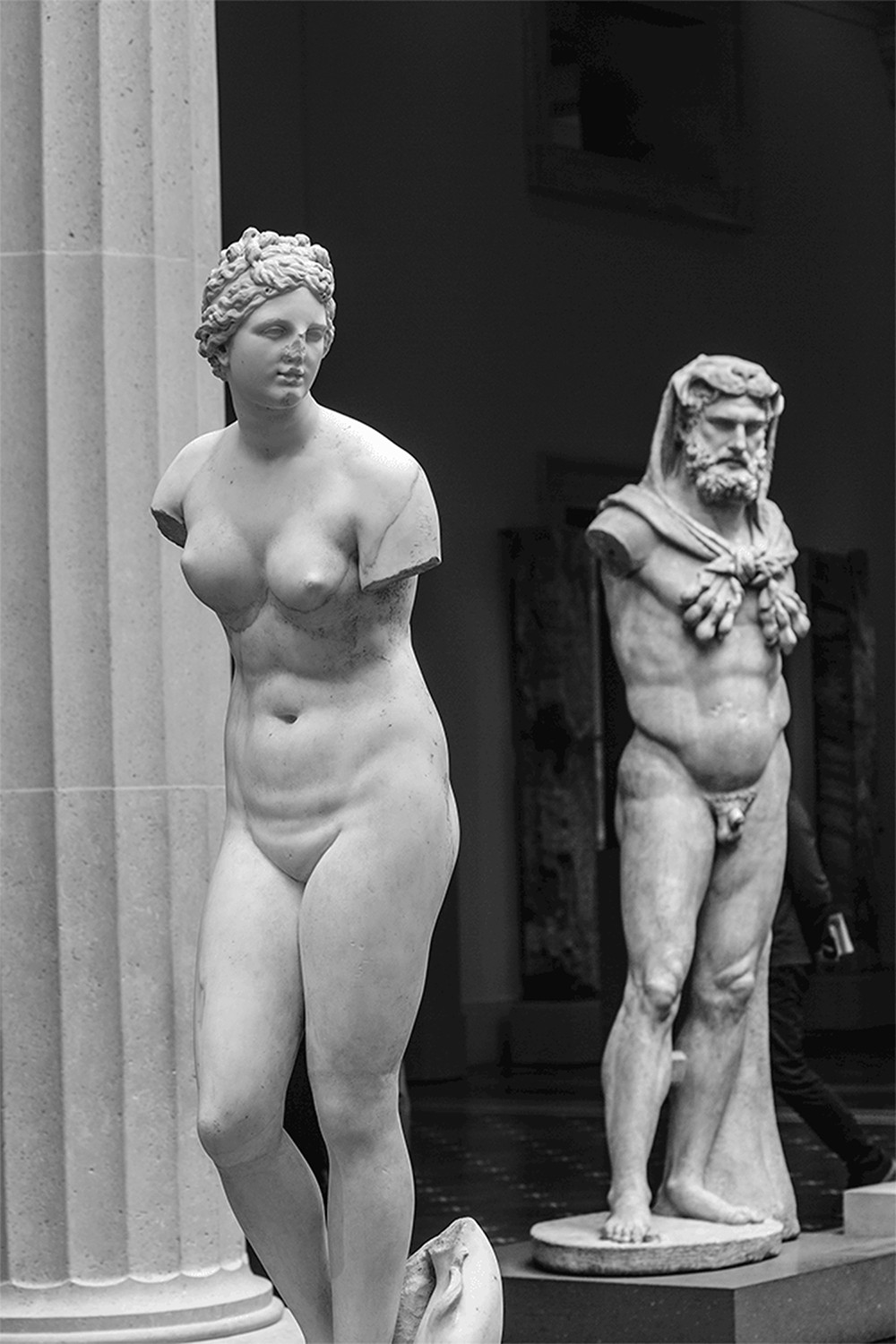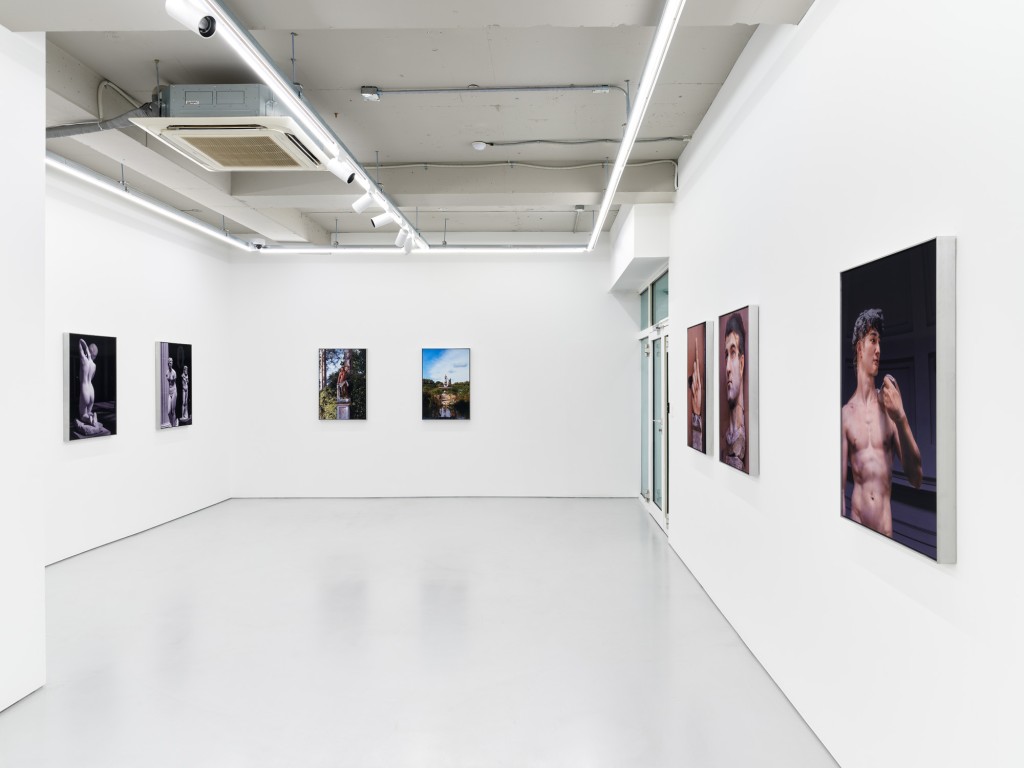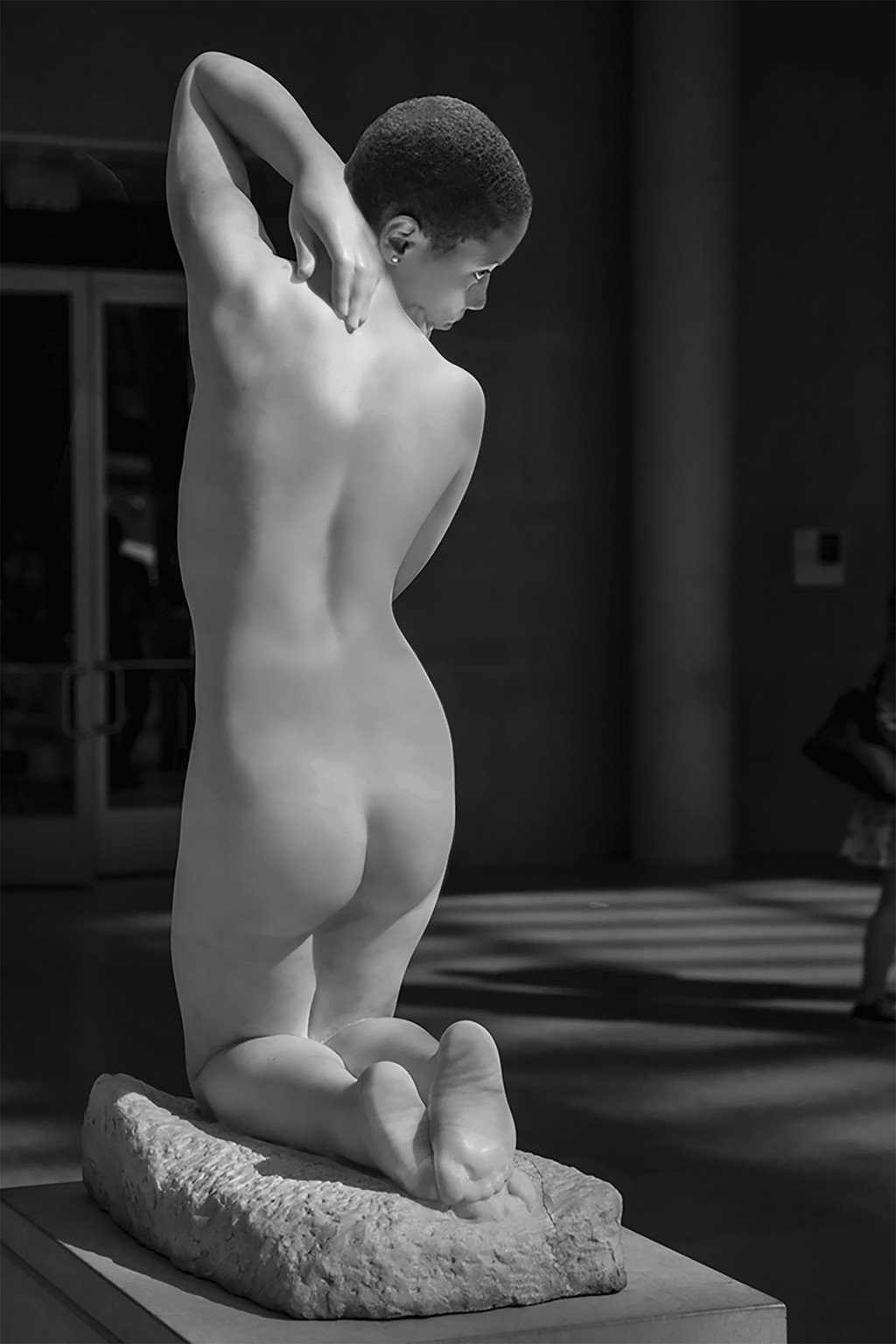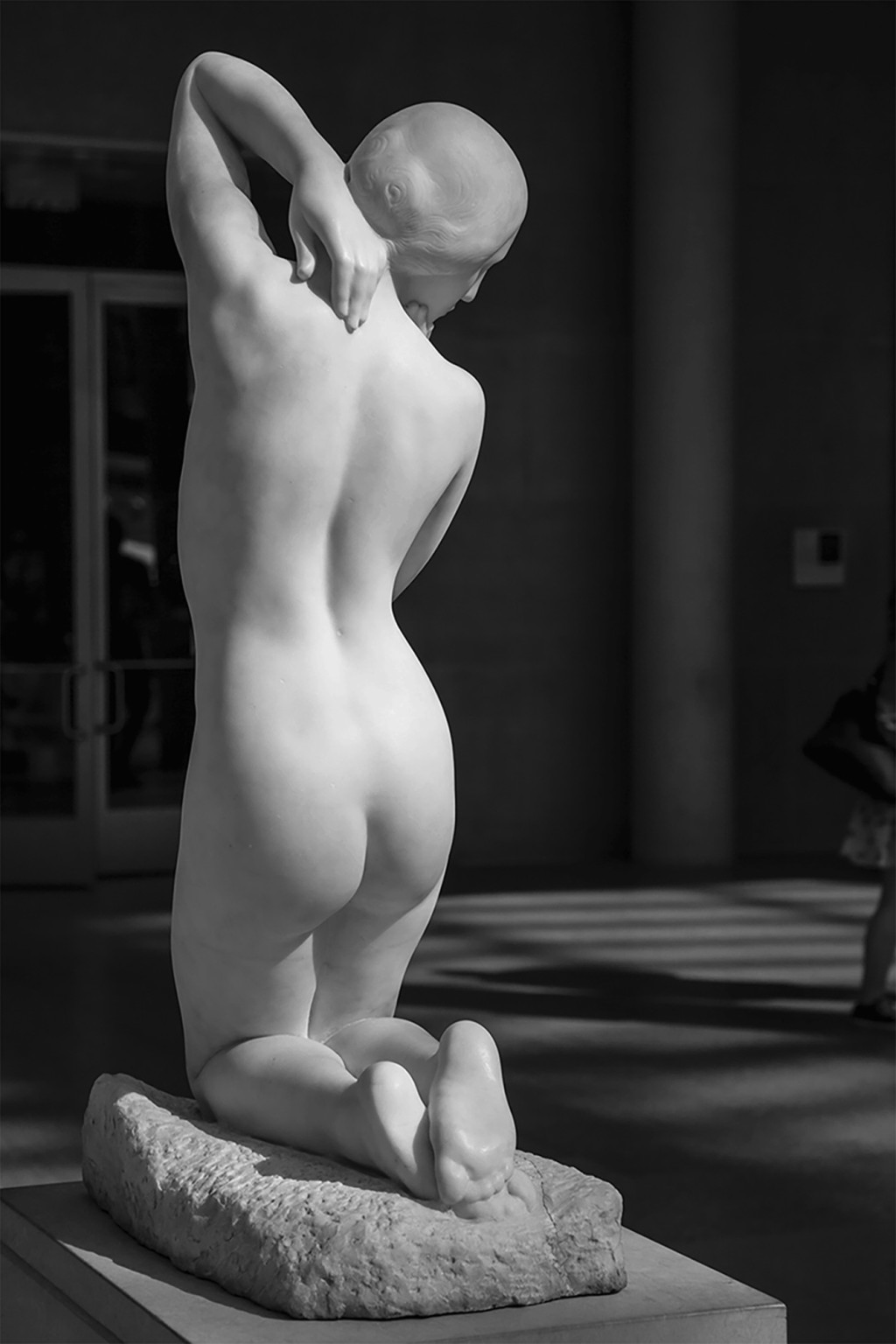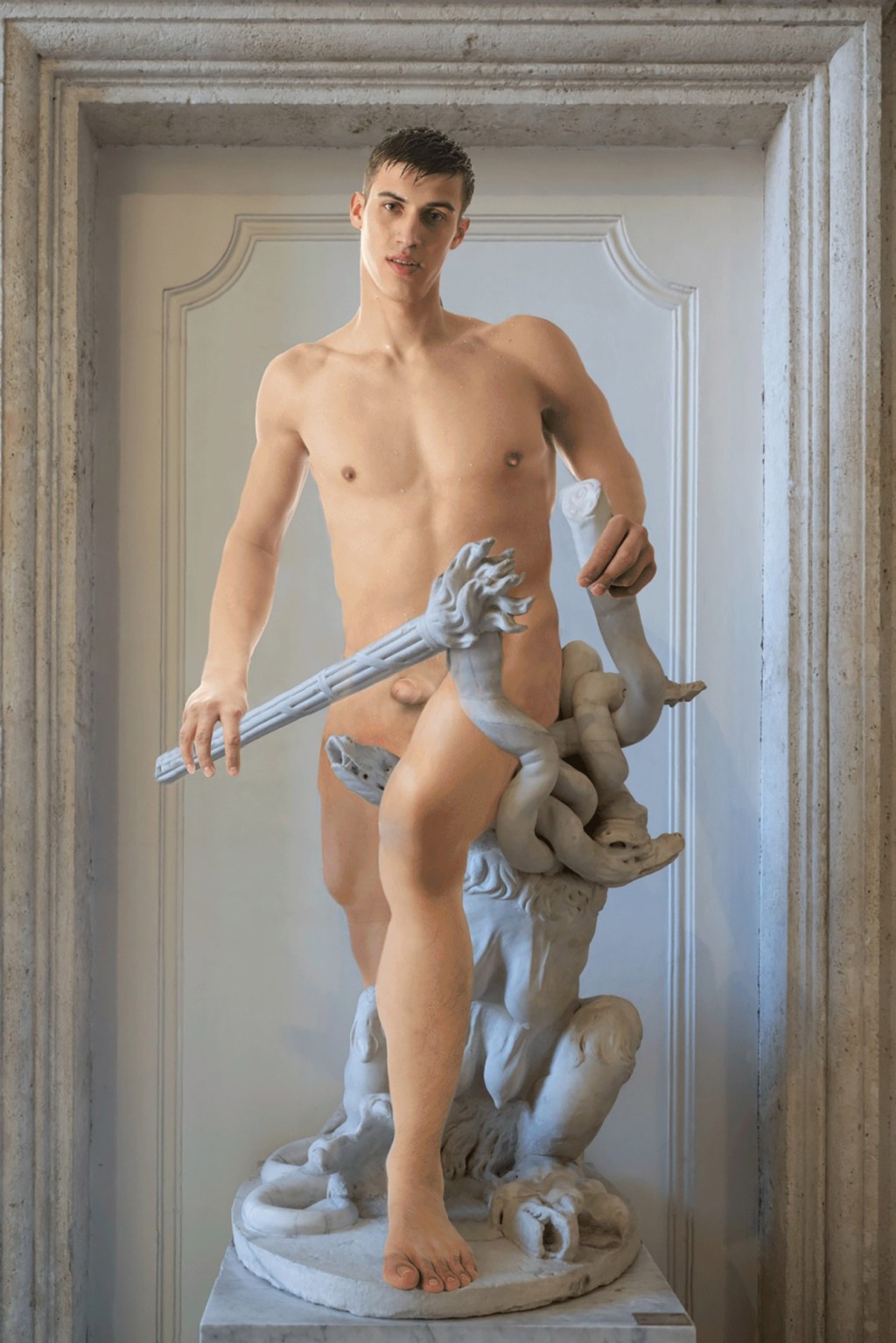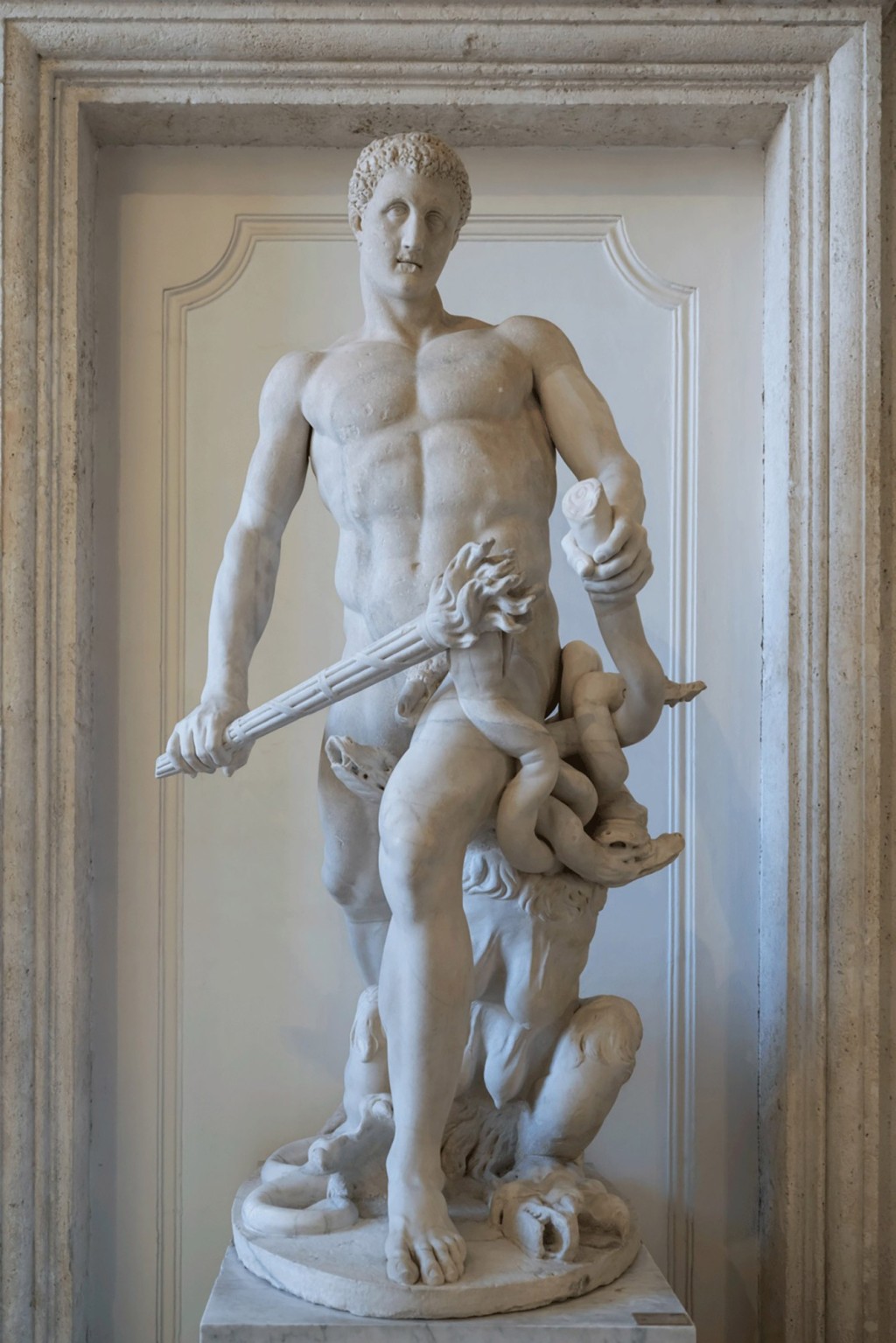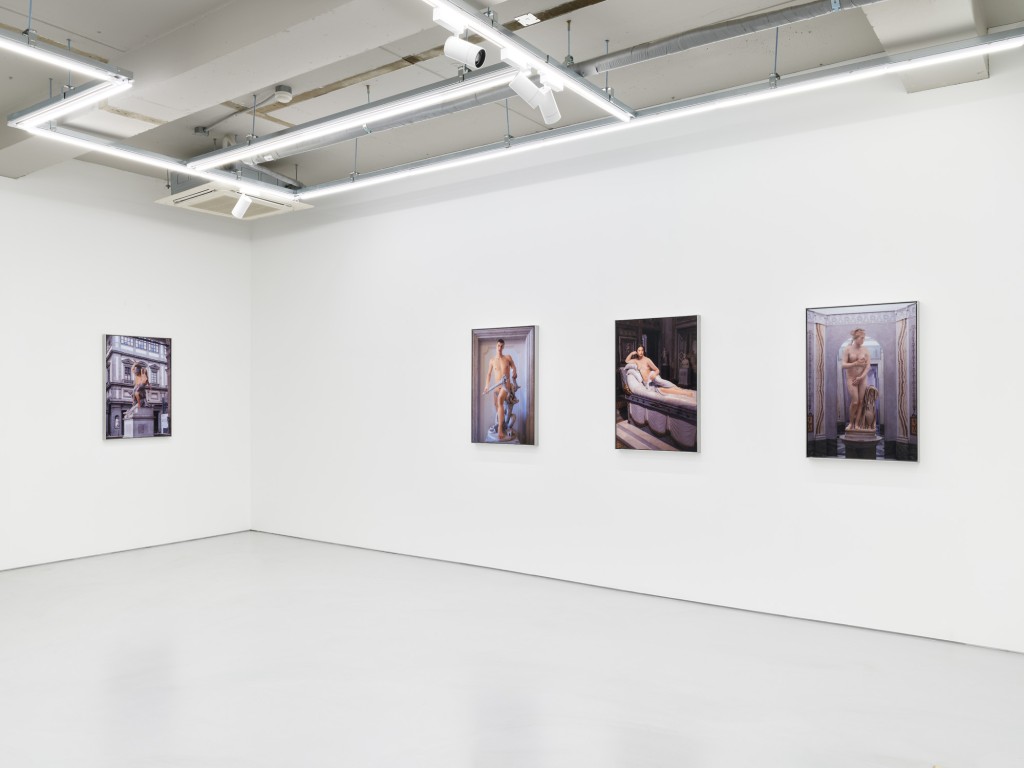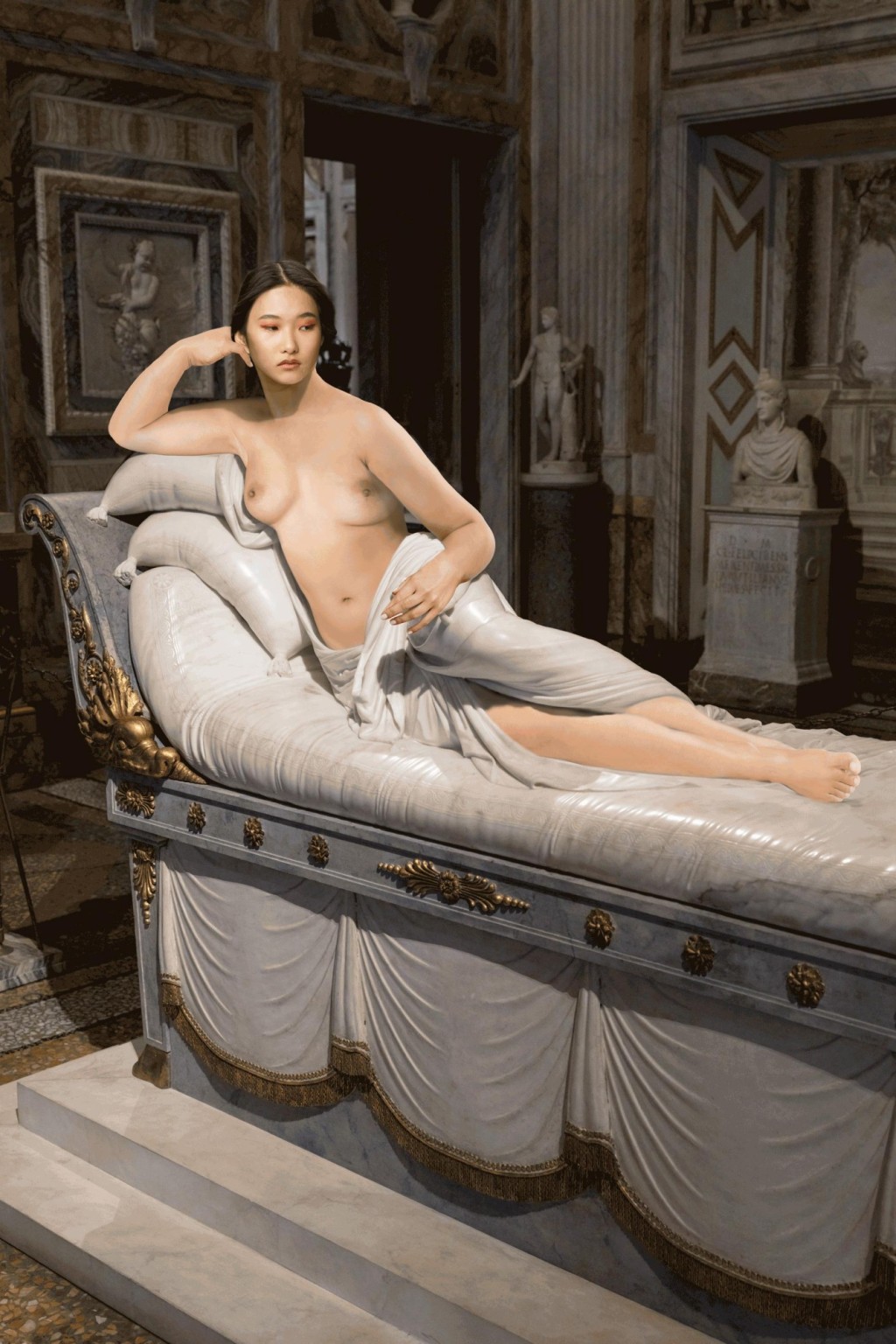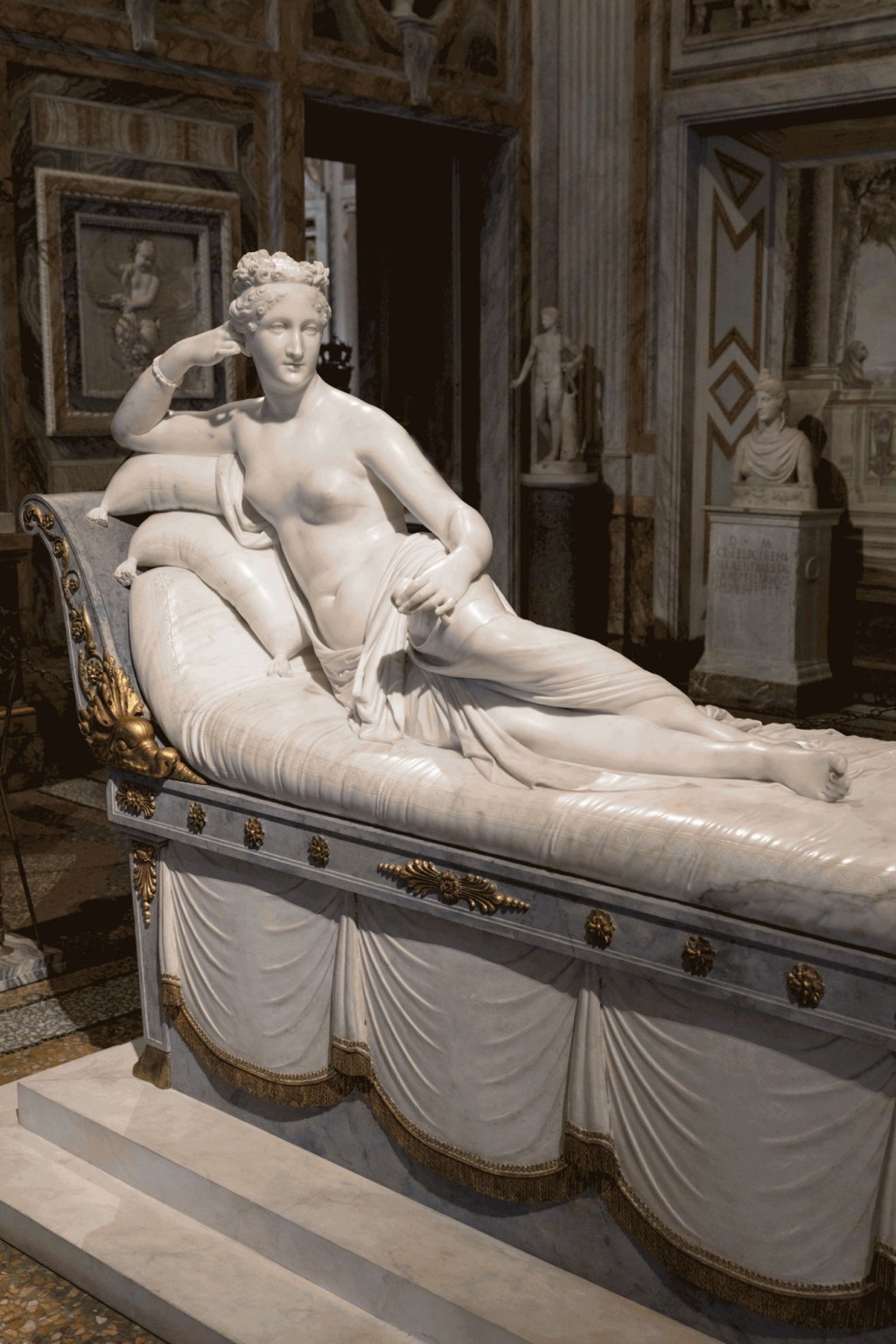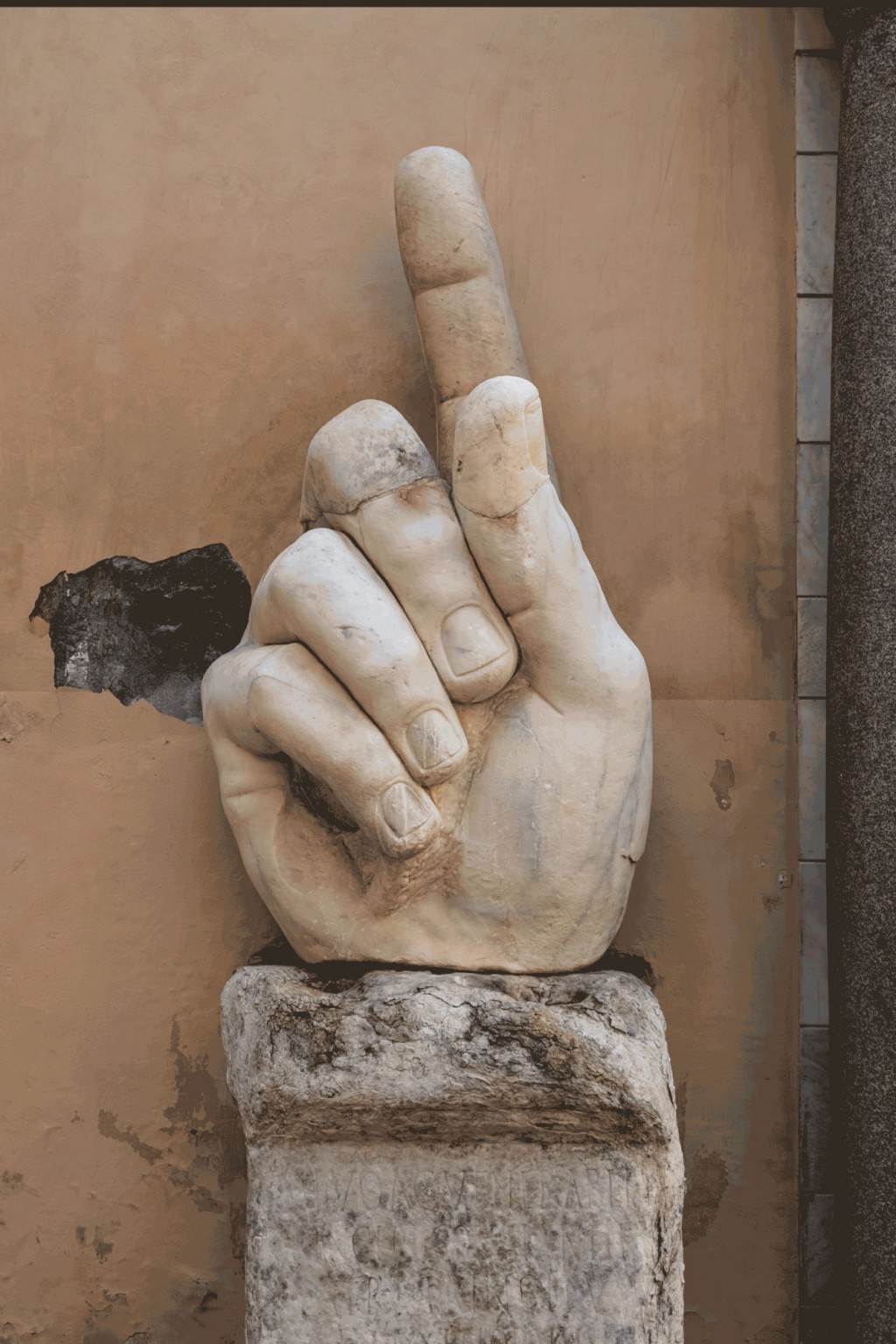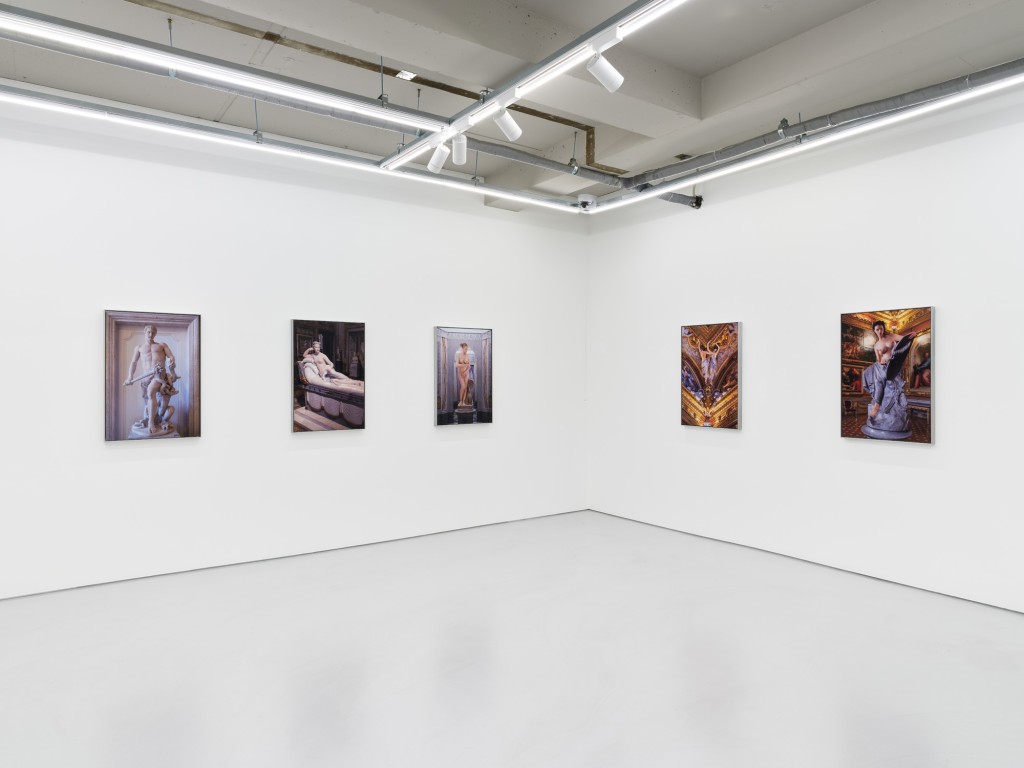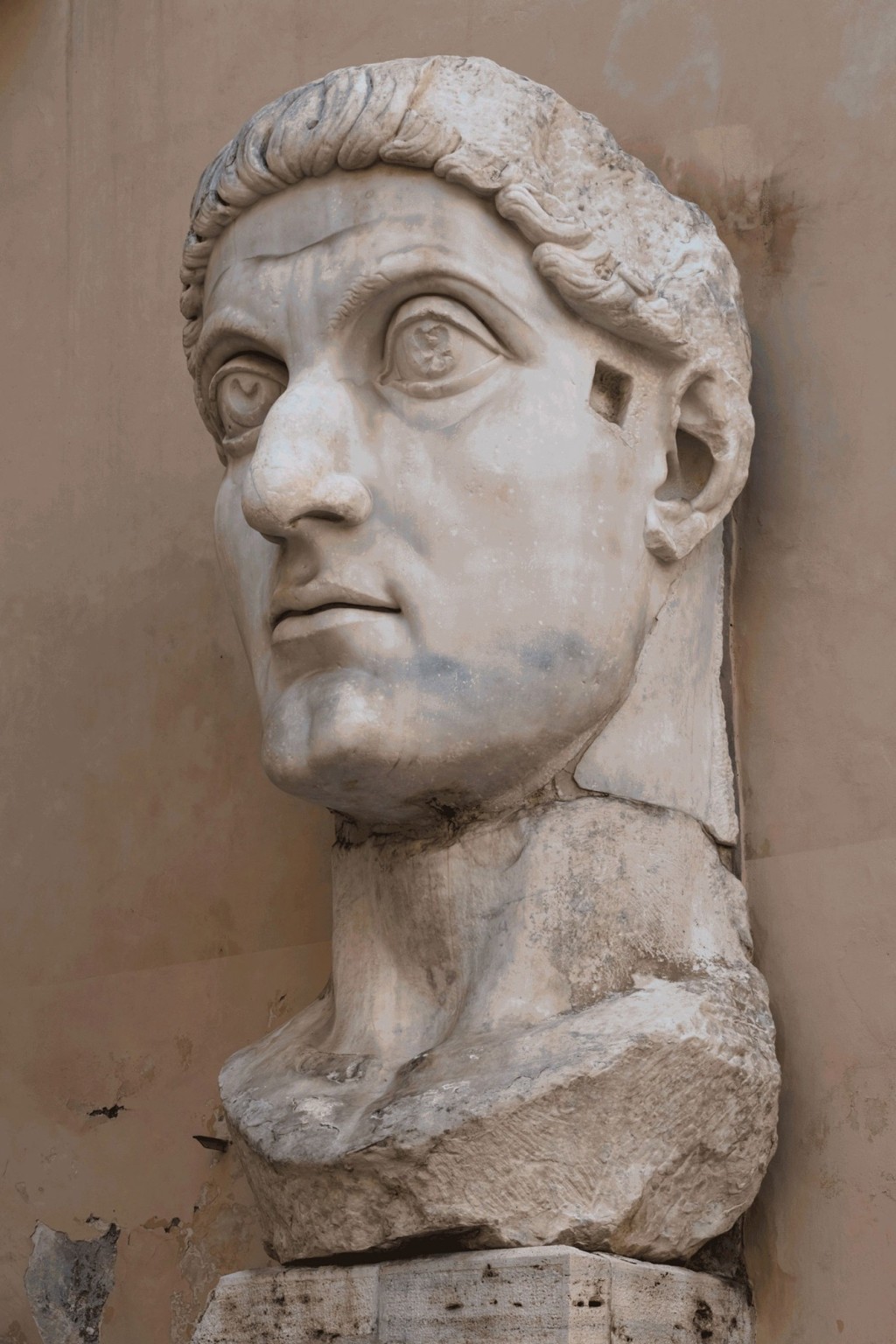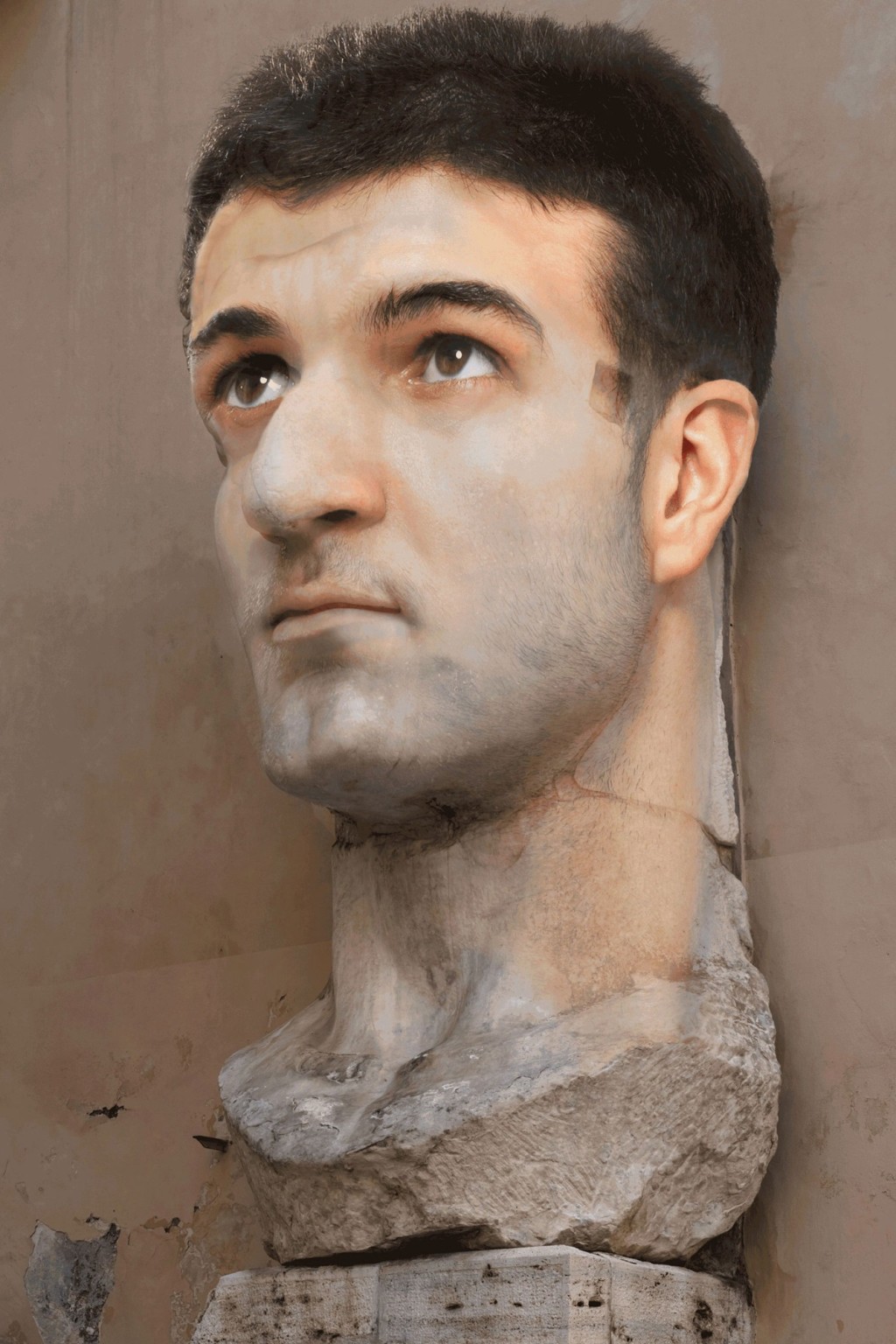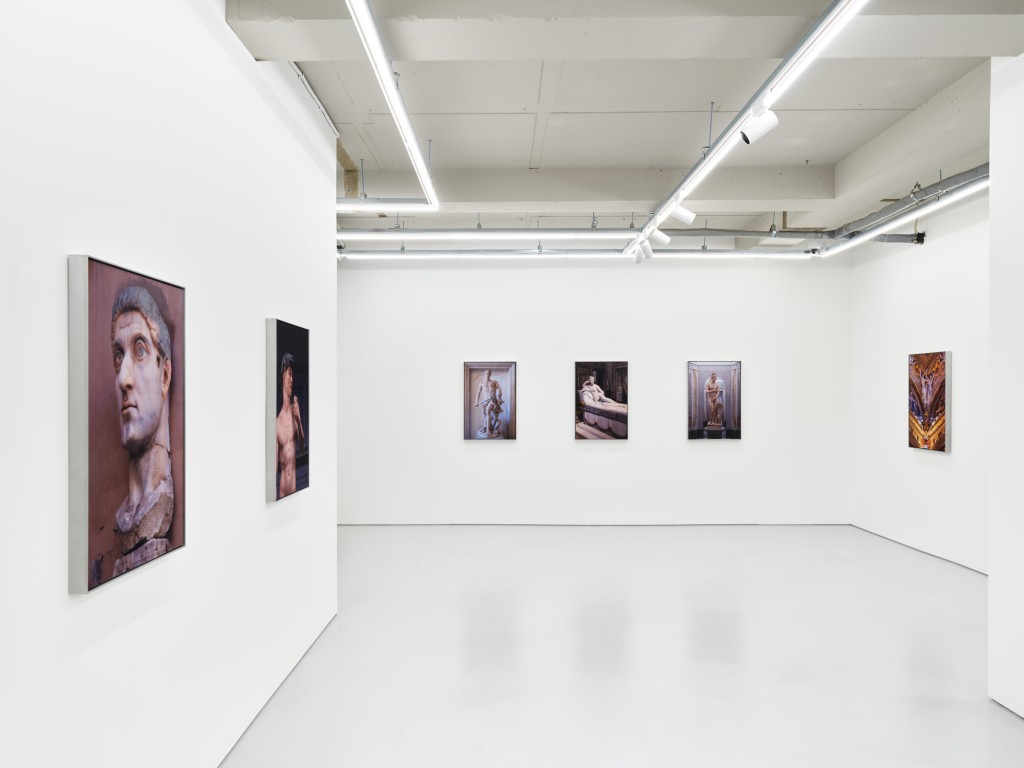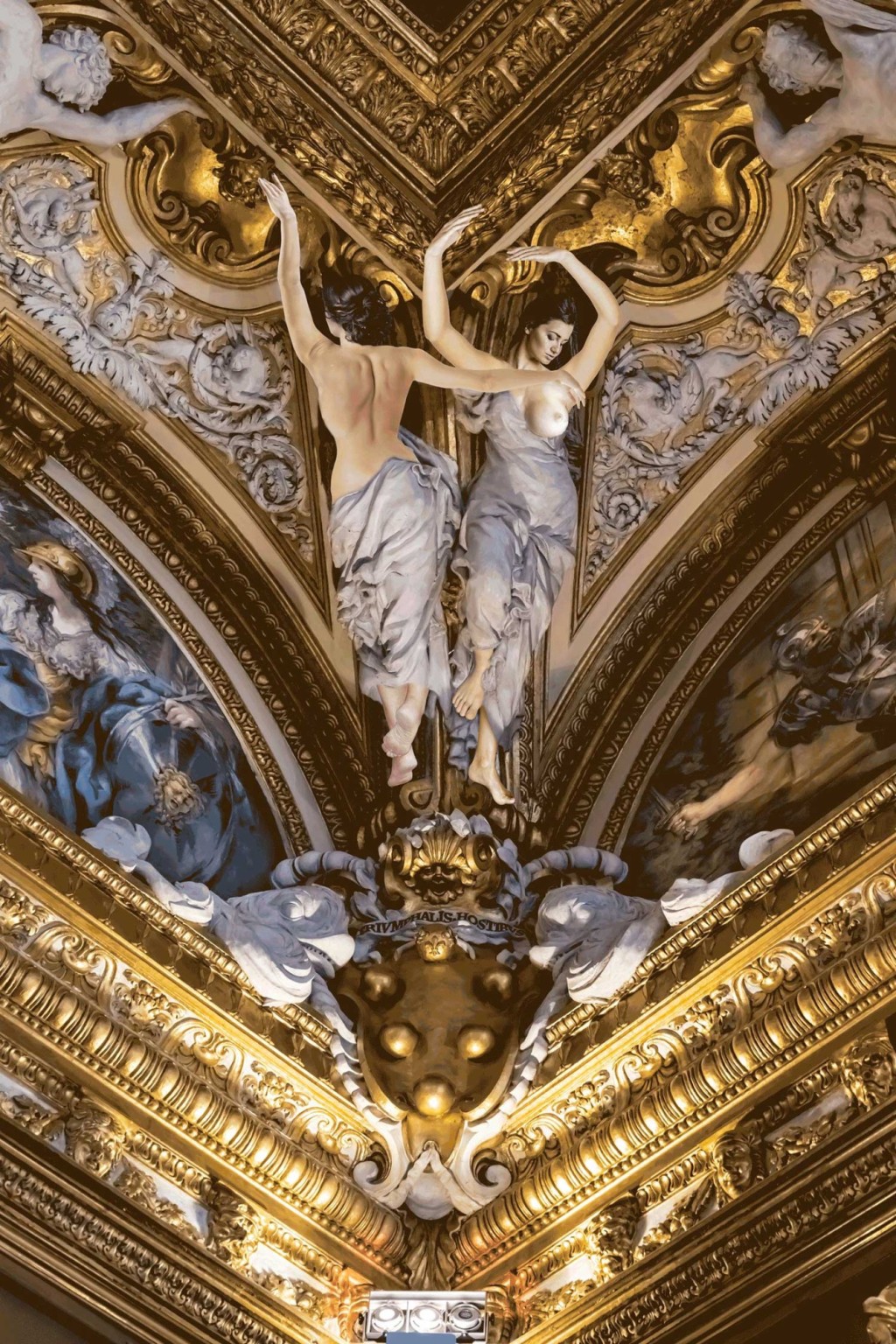
The perception of beauty and taboos have changed over time. In Greco-Roman culture, the balance and harmony of the human body were major elements of beauty, and each part of the human body had to be proportional and symmetrical. Body Length and proportions of the limbs were important, and the nude was considered a symbol of beauty and sanctity. One famous Roman love story is “Pygmalion and Galatea.”
This story inspired Aura Rosenberg’s conception of “Statues Also Fall in Love”, in which statues are brought to life through a lenticular lens. While in the Middle Ages and modern times, nudity was religiously, morally, and legally considered a sensitive issue, representation of the human body was revived in the Renaissance, of which eroticism and violence shown in marble statues were the focus of Aura’s attention.
Venus Victrix (Pauline Bonaparte as Venus Victrix, Antonio Canova, 1804-08) is a stone statue which sexually represents Pauline Bonaparte as Aphrodite. Given her social position and status, such depiction could have been considered taboo in the early 19th century Italian society. This statue was created during the Romantic period in which taboos, aspirations, and decadence were more freely discussed, expressions that were perhaps a provocation against the social and moral norms of the time.
Aura Rosenberg has been working on the lenticular series since 2018. In this exhibition, photographs of statues the artist has taken using lenticular lens in Italy’s Rome and Florence and in New York, are converted into pornographic images that may be found online. By placing the idealized beauty found in nude statues and the modern nude that is seen as a pornographic in the same frame, she illustrates the contrast between restrained beauty (Apollonian) and modern pornography (Dionysus).
Friedrich Nietzsche mentions the dichotomy between Dionysian (vulgar, erotic, colorful) and Apollonian (idealized, rational, monochromatic) in “The Birth of Tragedy from the Spirit of Music” (1872). This dichotomy appears in what Reginald Wilenski refers to as “Greek prejudice.” Wilenski criticizes the view that sees ancient Greek art and culture as sublime and idealized, arguing that the beauty and humanity of Greek culture is actually considered a lot more realistic and humane. Ancient Greek statues, being mostly white, were considered to be examples of the superiority and idealized beauty of Greek culture, but the statues his team studied in Herculaneum and Pompeii that were excavated in the 18th century showed that the actual statues of ancient Greece are likely to have had a highly diverse range of colors and expressions.
Lenticular lens is an image utilization culture in the early stages of digital technology, a technology which was mainly developed and popularized from the late 20th century to the early 21st century. Digital image conversion technology makes images more dynamic, and responds to movements of the viewers as small as a few centimeters or a single step at the most. The main trigger for this movement is probably curiosity, and from the narrow variations that arouse questions, we come to find images spanning centuries that address the gaps in the taboos of the period.
